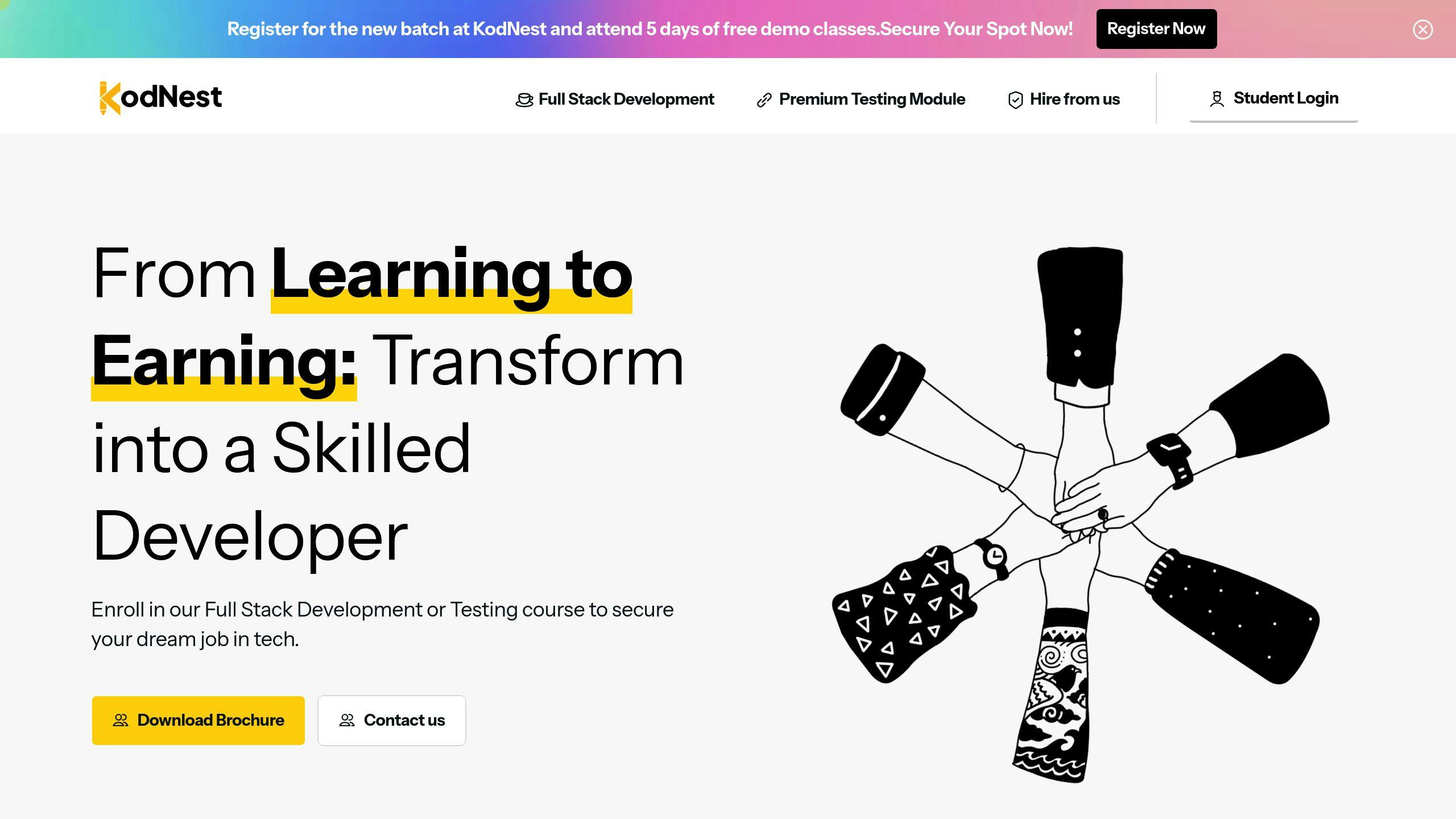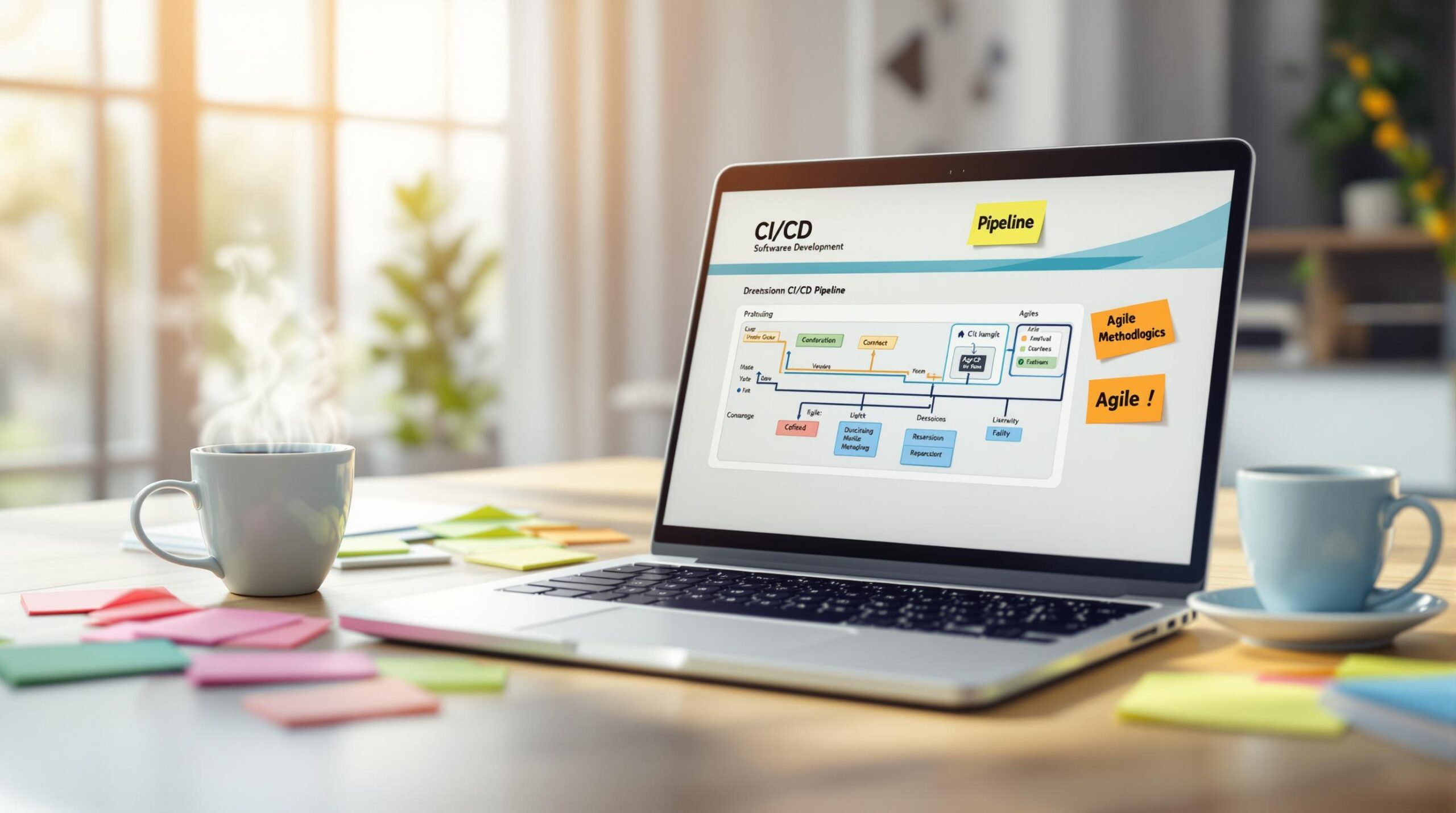Want to land an IT job without an IT degree? It’s totally possible. Here’s how:
- Identify your transferable skills: Analytical thinking, problem-solving, or project management can be your strengths.
- Learn in-demand technical skills: Start with programming languages like Python or JavaScript, and master tools like Git and MySQL.
- Gain hands-on experience: Build projects, contribute to open-source, or take internships to showcase your skills.
- Prepare for the job market: Create a strong portfolio, tailor your resume, and practice technical interviews.
The IT industry values skills over degrees, so focus on learning, practicing, and networking to stand out. Ready to start? Let’s dive in!
1: Assess Your Skills and Career Goals
Start by matching your current strengths to opportunities in the tech world.
Identify Transferable Skills
Even if you don’t have an IT background, you likely have skills that fit well in tech. For instance, math graduates often shine in data-related roles, while physics students tend to have the logical mindset needed for programming.
Some key skills to leverage include:
- Analytical Thinking
- Problem-Solving
- Project Management
- Communication
Explore IT Career Paths
The tech industry offers a variety of paths with strong potential for growth. Here are some popular options:
- Cybersecurity: Focuses on security measures and risk management – great for detail-oriented thinkers.
- Cloud Computing: Involves platforms like AWS or Azure and network architecture.
- Software Testing: Centers around automated testing tools and frameworks.
- Data Analysis: Uses tools like SQL and data visualization – perfect for those with a background in math or statistics.
Use Self-Assessment Tools
Take advantage of tools to better understand your skills and career options:
- LinkedIn Learning Assessments: These help you match your skills to tech roles and explore potential career paths.
- Skill Quizzes: Platforms like Coursera or Indeed offer quizzes to pinpoint your strengths and areas for improvement.
- Mentorship Opportunities: Reach out to IT professionals through LinkedIn or forums to learn about their daily tasks and the skills they use.
These insights will guide your next step: building the technical skills needed for your chosen path.
2: Build Technical Skills
With your career goals mapped out (see Section 1), it’s time to develop the technical expertise needed for IT roles. Focus on skills that are highly sought after and align with your chosen path.
Learn Programming Languages
Start by mastering one programming language that fits your career focus. For example, Python is great for beginners and widely used in data-related roles, Java is ideal for enterprise-level development, and JavaScript is essential for web applications.
Here’s how to approach it:
- Pick a Learning Platform: Platforms like freeCodeCamp or Udemy offer structured courses that include hands-on exercises.
- Practice Regularly: Dedicate at least 2 hours daily to coding. Consistency is key.
- Build Projects: Work on small, practical projects that address real-world problems.
These projects will become part of your portfolio, which we’ll expand on in Section 3.
Master Tools and Basics
Understanding tools like version control systems and databases is crucial. Here’s a quick breakdown of essential tools to focus on:
| Tool Category | Must-Learn Tools | Primary Use |
|---|---|---|
| Version Control | Git, GitHub | Collaborating on code |
| Web Fundamentals | HTML5, CSS3 | Structuring and styling web pages |
| Databases | MySQL, PostgreSQL | Managing and querying data |
| Development Tools | VS Code, Eclipse | Writing and debugging code |
These tools form the backbone of IT work, and mastering them will give you a strong start.
Use Training Platforms Like KodNest

Platforms like KodNest offer a blend of theoretical learning and practical experience. Their programs include:
- One-on-one mentorship for personalized guidance.
- Mock interviews and hackathons to prepare you for real-world challenges.
- Comprehensive placement support to help you land your first role.
This combination of structured learning and hands-on practice can fast-track your journey into IT.
3: Gain Practical Experience
Now that you’ve got a solid technical foundation from Section 2, it’s time to roll up your sleeves and put those skills to work. Hands-on experience not only sharpens your abilities but also helps you stand out to employers.
Work on Projects
Start with projects that highlight your technical skills and problem-solving abilities. Aim to build solutions that address real-world needs:
| Project Type | Description | Skills Showcased |
|---|---|---|
| Personal Website | Portfolio site featuring your work | HTML, CSS, JavaScript, Responsive Design |
| E-commerce App | Basic shopping platform | Full-stack development, Database management |
| Bug Tracking Tool | System for managing software issues | Testing frameworks, Backend development |
| Data Analysis Dashboard | Interactive data visualization | Python, Data visualization, API integration |
After completing 2-3 projects, you’ll have a portfolio that demonstrates your capabilities. From there, expand your experience through internships or freelancing.
Pursue Internships and Freelancing
Internships and freelance gigs give you a chance to work in real team environments and tackle actual business challenges.
- Internships: Create a profile on platforms like Internshala and set up alerts for IT roles. Startups are a great choice for gaining hands-on experience across various tasks.
- Freelancing: Begin with smaller projects on platforms like Fiverr. Offer competitive rates initially to build your profile and earn positive reviews.
Both options help you build professional connections while growing your skills.
Contribute to Open-Source
Open-source projects are a fantastic way to collaborate with others and showcase your skills. Here’s how to get started:
- Look for "beginner-friendly" projects on GitHub.
- Start small – fix documentation or tackle minor bugs.
- Join the project’s community on Discord or Slack for guidance and networking.
"Contributing to open-source projects teaches collaboration and problem-solving skills while building a portfolio of work that demonstrates your abilities to potential employers", says Akash Pandey, CEO of KodNest.
sbb-itb-f454395
4: Prepare for the Job Market
Now that you’ve gained hands-on experience through projects and internships (see Section 3), it’s time to focus on presenting yourself as a strong candidate for IT roles.
Build a Standout Resume
Your resume should clearly highlight your technical skills and the projects you’ve worked on, emphasizing your transition into IT. Here’s how to structure it:
| Section | What to Include |
|---|---|
| Technical Skills | List programming languages, tools, and frameworks you’re proficient in. |
| Projects | Showcase personal or open-source projects that demonstrate your expertise. |
| Certifications | Mention relevant technical courses or certifications you’ve completed. |
| Education | Include your degree and any coursework relevant to the IT field. |
This layout ties directly to the portfolio you’ve built in Section 3, offering employers clear evidence of your abilities. To improve your chances, tailor your resume for each job by using keywords from the job description – this helps you get through Applicant Tracking Systems (ATS).
Build Your Network
Networking is a key step in landing IT roles. Use your open-source contributions and other projects as conversation starters when connecting with industry professionals.
Here’s how to boost your professional visibility:
- Optimize your LinkedIn profile: Highlight your projects and technical skills.
- Engage in online communities: Be active on platforms like Stack Overflow or niche forums in your field.
- Connect with industry experts: Follow and interact with leaders in your area of interest.
Don’t forget in-person opportunities:
- Attend local tech meetups to meet professionals in your area.
- Participate in hackathons to showcase your skills and collaborate with others.
- Join specialized groups, such as Python-focused communities or React development forums.
Get Ready for Interviews
Technical interviews can be challenging, so preparation is key. Focus on both technical and behavioral aspects to present yourself as a well-rounded candidate.
Technical Preparation:
- Practice coding problems on platforms like LeetCode.
- Work on system design exercises (e.g., designing a URL shortener).
- Brush up on essential algorithms and data structures.
Behavioral Preparation:
- Use the STAR method (Situation, Task, Action, Result) to structure your answers.
- Prepare stories that demonstrate your problem-solving skills and adaptability.
- Be ready to confidently explain your career transition into IT.
Helpful Resources:
- Read Cracking the Coding Interview by Gayle Laakmann McDowell for in-depth guidance.
- Use platforms like Pramp to practice mock interviews and get real-time feedback.
Conclusion: Your Path to IT Success
Key Points
Shifting from a non-IT background to an IT career is entirely possible with the right mindset and commitment. The IT industry is booming, with areas like cybersecurity expected to grow by 32% and cloud computing by 8% in the coming years [2].
To succeed, you’ll need to develop a mix of technical know-how and soft skills, such as problem-solving. By combining practical skills, real-world experience, and networking, you can set yourself up for success in IT roles.
Keep Yourself Motivated
Throughout this guide, we’ve highlighted that skills often matter more than formal degrees in IT hiring. To keep moving forward:
- Celebrate milestones like finishing a course or completing a project to stay on track.
- Engage with professional communities to connect with others pursuing similar career changes.
- Focus on continuous learning – IT professionals at all levels regularly update their skills to remain competitive [1].
With steady effort and a willingness to learn, you can make this transition happen. Many successful IT professionals started right where you are today.
FAQs
How to switch from non-IT to IT jobs?
Making a career shift to IT might feel daunting, but breaking it into steps can make the process smoother. Here’s how to approach it:
1. Identify Your Focus Area
Review your skills and interests to find an IT specialization that aligns with your background. For example, you might explore fields like cybersecurity, software development, or cloud computing based on what resonates with you.
2. Build Core Technical Skills
Strengthen your foundation with essential technical concepts, such as:
- Programming basics
- Data structures and algorithms
- Object-oriented programming
- Version control tools like Git
- Database management systems
3. Learn the Right Programming Languages
Choose programming languages based on the IT domain you’re targeting:
- Web Development: JavaScript, HTML, CSS
- Software Development: Java, Python
- Data Analysis: Python, R
4. Get Hands-On Experience
Practical experience is key. Work on:
- Personal projects
- Contributing to open-source initiatives
- Taking up internships
5. Join Training Programs
Look for structured programs that offer:
- Real-world projects
- Mentorship
- Job placement assistance
These steps can help bridge the gap between your current skills and the demands of an IT role.





